Variegated hibiscus plants are beautiful garden additions but require more care than the average plant. They are native to Africa and Asia but come in gorgeous colors, shapes, and sizes. With their brightly colored bracts, hibiscus plants are in high demand and can be found in gardens worldwide.
Hibiscus plants are beautiful and versatile but can be challenging to care for. Variegated hibiscus, in particular, has a reputation for being difficult to grow because they are less hardy than their solid-colored counterparts. They need more sun and fertilizer than other varieties of hibiscus, as well as more consistent watering.
However, as this guide will show you, there are different ways to grow and care for variegated hibiscus successfully!
What is a Variegated Hibiscus?
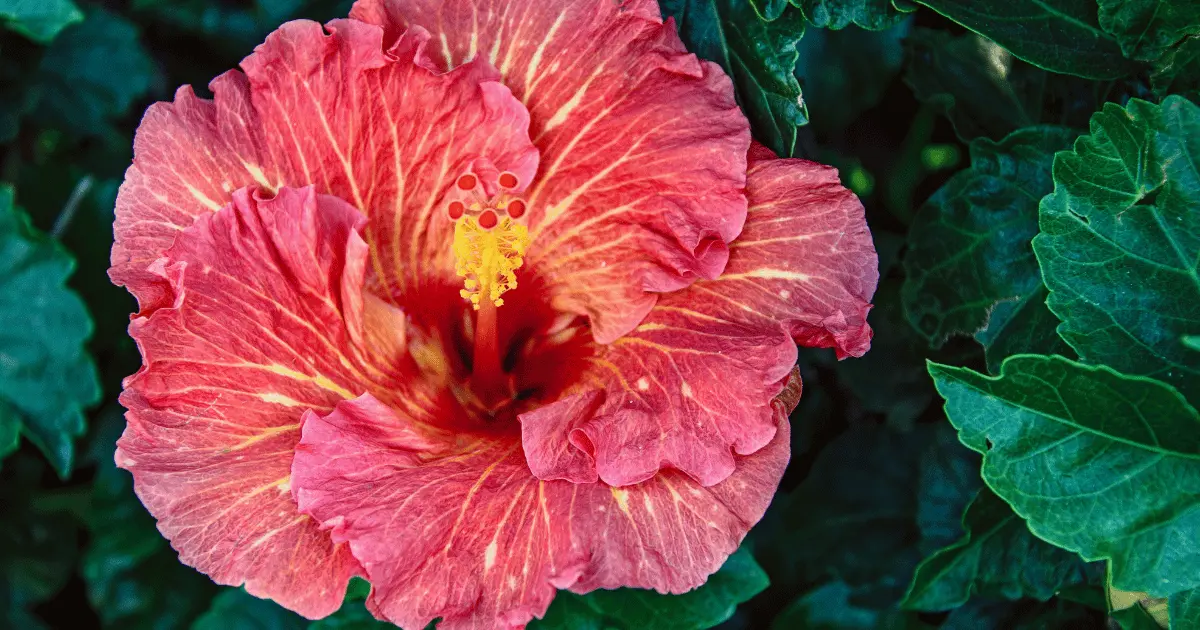
The variegated hibiscus is a massive shrub with stunning pink, white, and green foliage. This unique plant comprises large crimson trumpet-shaped blooms with serrated edges. They are often held semi-pendulously and have a star shape when viewed from the front. Although the most common colors for variegated hibiscus are white and pink, you can also find other color combinations.
They are beautiful flowers that are a great addition to any garden because of their beauty. Variegated hibiscus plants need full sun and well-drained soil to thrive. They are relatively easy to care for, but keeping an eye on them is important as they can be susceptible to diseases and pests. In addition, variegated hibiscus requires regular watering and fertilizing every few weeks during the growing season.
Variegated types of hibiscus are usually more expensive than their solid-colored counterparts, but they’re worth it because they add so much to a garden or patio. Reducing watering and stopping fertilizing is important, especially when the weather cools off. Doing this will help the plant prepare for winter and prevent it from getting too much moisture which can lead to problems.
Types of Hibiscus Varieties
There are different varieties of variegated hibiscus, and each one has its unique beauty. Several varieties are popular, including:
1. Hibiscus Rosa-Sinensis

The Rosa-Sinensis is a hibiscus variety that can grow up to 10 feet tall. This type of hibiscus has large, showy flowers that come in various colors, including white, pink, red, and purple.
2. Hibiscus Syriacus
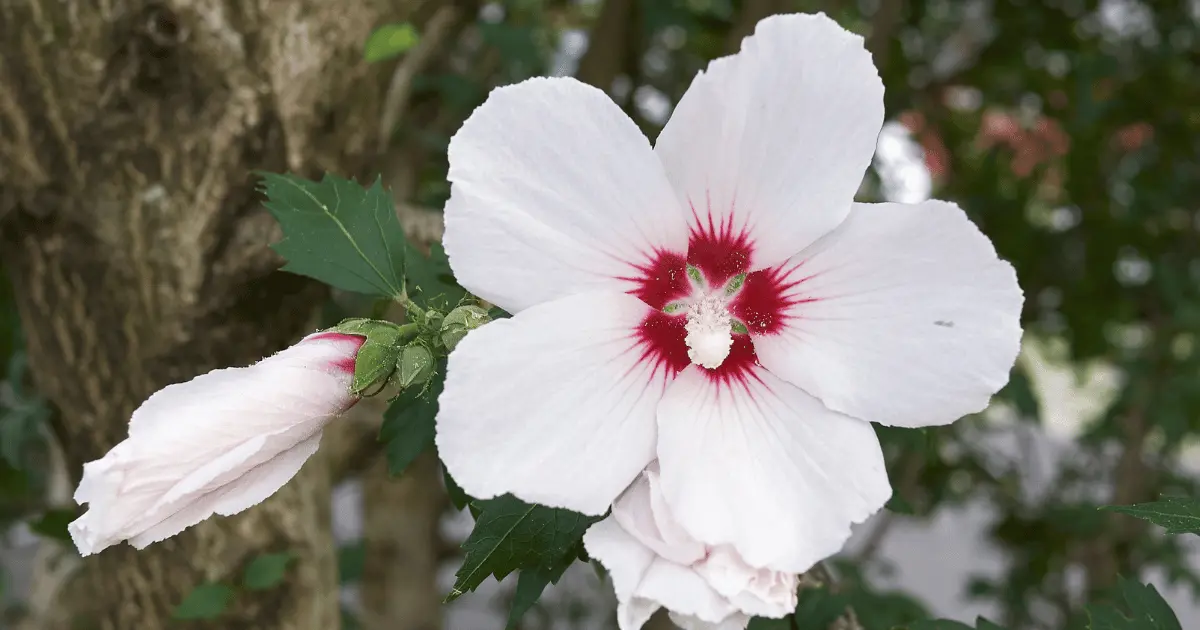
The Hibiscus Syriacus, or rose of Sharon, is another popular type of hibiscus. It is a deciduous shrub that can reach up to 12 feet tall and produces beautiful flowers in shades of white, pink, or purple.
3. Hibiscus Trionum
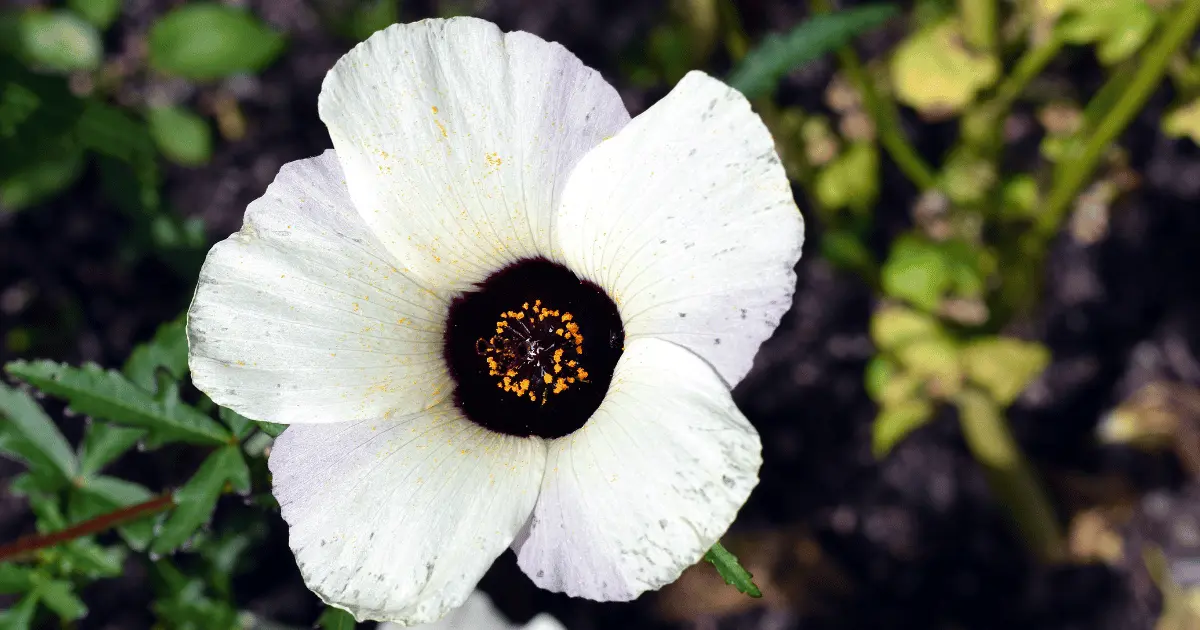
If you’re looking for a low-maintenance type of hibiscus, the Hibiscus Trionum, or Venus flytrap, is a good option. This plant gets its name because its leaves resemble small Venus flytraps. It’s a small plant that only grows to about 2 feet tall and produces yellow or white flowers.
4. Berry Awesome
This type is fast-growing, with compact, dense bushes that grow up to 4 feet tall and a comparable spread at maturity. This hibiscus variety blossoms will make a statement in your borders with magnificent 7-8-inch, gently ruffled blooms in vibrant pink with red eye. The dark green foliage serves as an excellent background for the massive flowers that will delight your garden from July through September.
5. ‘Cajun Cocktail’ Hibiscus rosa-Sinensis
This one-of-a-kind hibiscus features stunning multicolored flowers about 6 inches across, with no two blooms precisely identical.
6. Hibiscus rosa-sinensis ‘Variegata’
This variety has large, showy white flowers with pink streaks and can reach up to 6 feet tall.
7. Hibiscus syriacus ‘Oiseau Bleu’
This variety has stunning blue flowers with white streaks. It is a slower grower than some other varieties, only reaching 4-5 feet tall.
8. Hibiscus acetosella ‘Variegata’
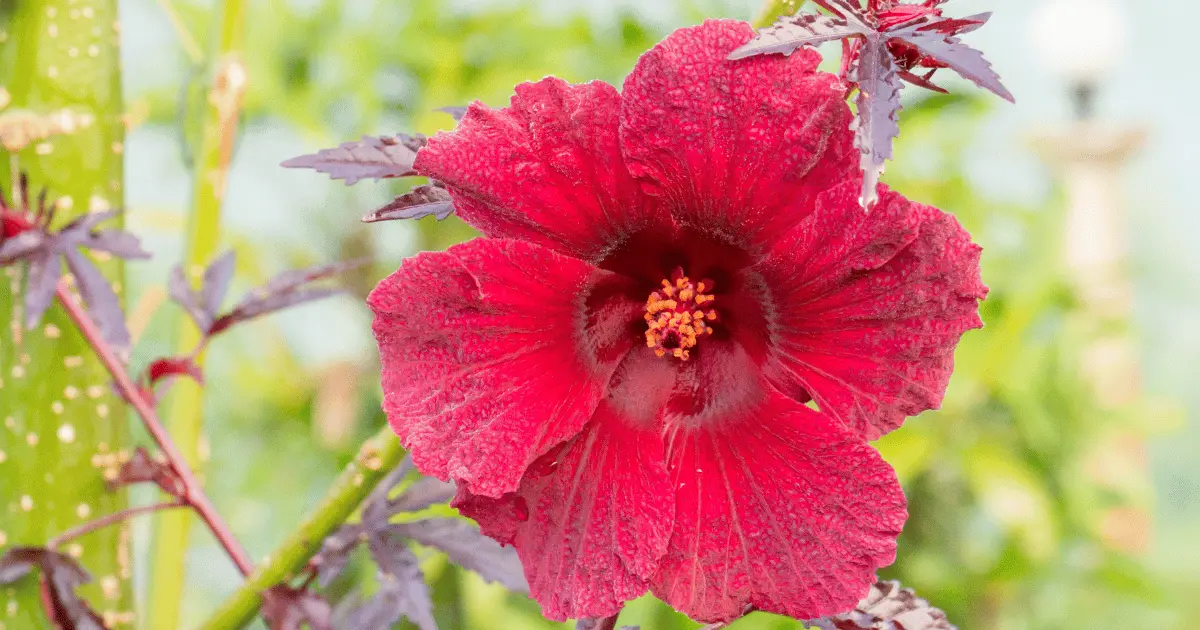
This variety has small, red flowers with white streaks. It is a very compact plant, only reaching 2-3 feet tall.
9. Hibiscus moscheutos ‘Splash Gordon’
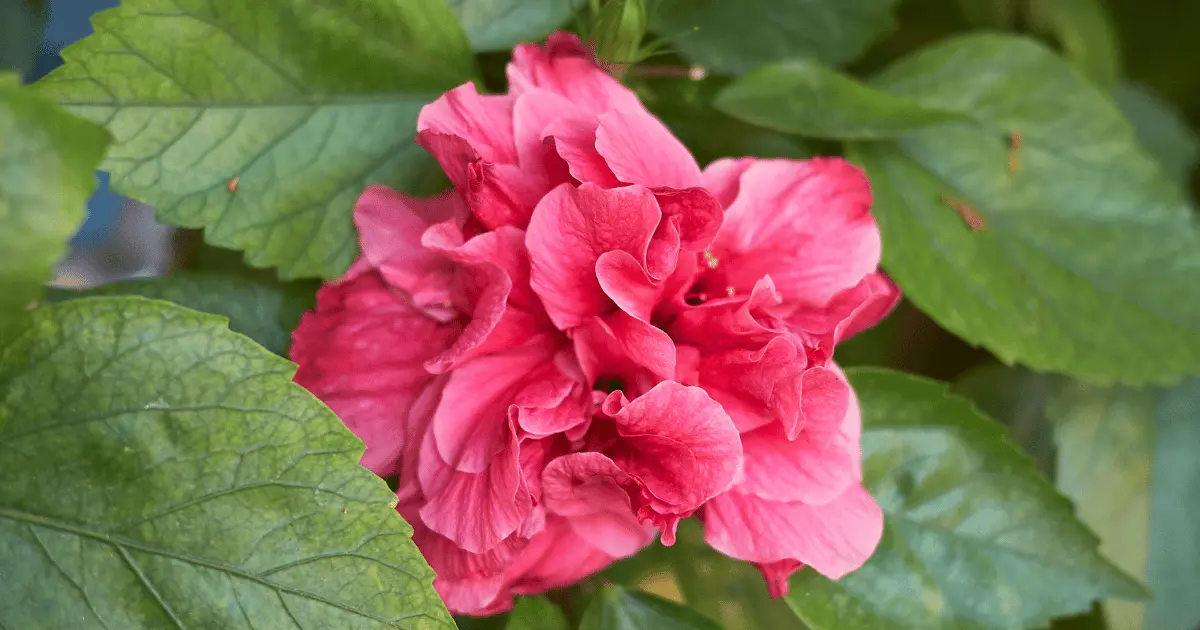
This variety has large, pink flowers with white streaks. It grows to be about 4-5 feet tall.
10. Hibiscus Sabdariffa
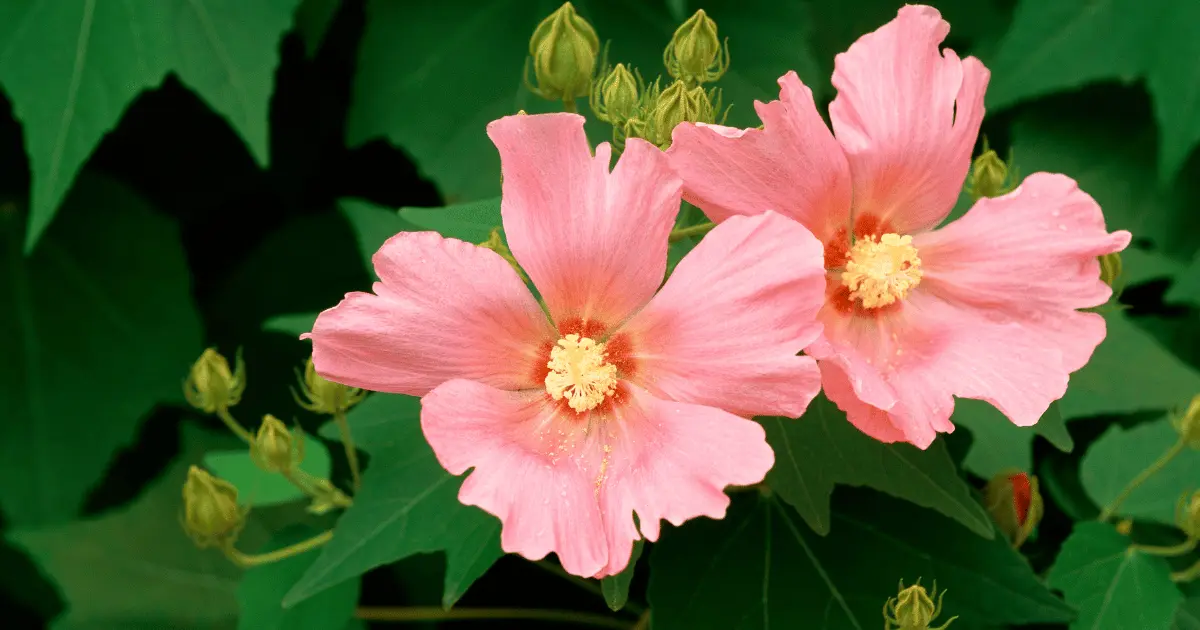
Finally, the Hibiscus Sabdariffa is most often used to make herbal teas and supplements. The flowers of this plant are red or pink and have a tart flavor.
Growing Variegated Hibiscus
Variegated hibiscus is a beautiful and unique addition to any garden. While these plants can be tricky to grow, they thrive with little care and attention. The following tips will help you grow variegated hibiscus successfully from stem cuttings:
- Choose a 4 to 6-inch long stem with a greenish hue. To cut the stem, use a sterilized, sharp edge blade.
- Trim the stem just under the bottom leaf node and soak the end in rooting hormone.
- Prepare the soil before planting by mixing in some organic matter. This process will help the hibiscus roots to establish themselves more easily.
- Place the cutting in a well-draining mixture of part perlite and potting soil.
- Cover the plant with a transparent plastic bag, but ensure it doesn’t touch the leaves. Bagging the cutting retains heat and moisture as the root develops.
- Make sure you plant your variegated hibiscus where it can get at least six hours of direct sunlight daily.
- When you plant your hibiscus, water it well and keep the soil moist but not soggy; during the hottest months, you may need to water it daily.
- Fertilize your variegated hibiscus regularly with a good-quality fertilizer designed for flowering plants to help them to produce more flowers.
Growing Variegated Hibiscus in Containers
Variegated hibiscus is perfect for growing in containers! They are relatively low-maintenance and can brighten up any space with their beautiful, variegated leaves. Here are a few tips for growing variegated hibiscus in containers:
- Choose a well-draining pot or container. Variegated hibiscus doesn’t like to sit in wet soil, so make sure your pot has good drainage holes.
- Place your pot in an area that receives full sun.
- Water your hibiscus regularly, but be careful not to overwater them.
- Fertilize your hibiscus every few weeks during the growing season with a balanced fertilizer.
- Prune your hibiscus as needed to control its size and shape. Remember to do this carefully so as not to harm the plant.
Caring for Variegated Hibiscus
Caring for variegated hibiscus isn’t difficult, but there are a few things to remember.
- Light – The most important thing is to give the plant plenty of light. It should be in a sunny spot for at least six hours a day; if you can provide more light, the better.
- Water – Watering is also important. After watering, wait a few minutes before watering again after the top few inches of soil have dried. During the winter months, you can cut back on watering slightly.
- Fertilizer – Fertilizing is another key element in taking care of variegated hibiscus. Use a fertilizer made for flowering plants and follow the directions on the package. If you fertilize during the growing season, do so every two weeks. If you fertilize during the winter, do so once a month.
- Pruning – Pruning is also important to keep your plant looking its best. Trim any dead or dying leaves or branches as soon as you see them.
When to Prune and Cut Back a Variegated Hibiscus
If you wish to prune and cut back your variegated hibiscus, you should do so in early spring or late winter before new growth begins. This pruning process will help to ensure that the plant produces more flowers and keeps its compact shape. When pruning, remove dead or damaged branches, crossing or rubbing against each other. You can also cut back the tips of the branches to encourage new growth.
Cutting back a variegated hibiscus is also a good way to promote flowering. Cut the plant back by one-third to one-half its height in late spring or early summer after it has finished flowering to encourage the plant to produce more flowers later in the season.
Potting and Repotting Variegated Hibiscus
Your variegated hibiscus would benefit from repotting every 1-2 years to ensure your plants get enough nutrients. Avoid excessively deep pots for regular flower output in container plantings, which might encourage the plant to expend its energy on root growth rather than flower production.
The optimum pot design is quite broad yet shallow. The finest pot will be made of unglazed clay and will have multiple drainage holes. Unglazed clay pots are porous, allowing water and air to pass freely through the plant.
Pests and Diseases of Variegated Hibiscus
Variegated hibiscus is susceptible to most pests and diseases that attack other hibiscus plants. These include aphids, whiteflies, scale, mealybugs, and spider mites. They are also susceptible to fungal diseases such as powdery mildew and root rot. It is important to keep your plant healthy to control pests and diseases, which means watering it regularly and fertilizing it with a balanced fertilizer.
You should also avoid overcrowding your plant and prune it regularly to promote air circulation. If you notice pests or diseases, you can treat them with an insecticide or fungicide designed for hibiscus plants.
Variegated hibiscus is an outstanding choice for beginners who desire a beautiful and resilient plant. They are also very rewarding houseplants and, with proper care, will thrive and provide beautiful blooms for years to come!
